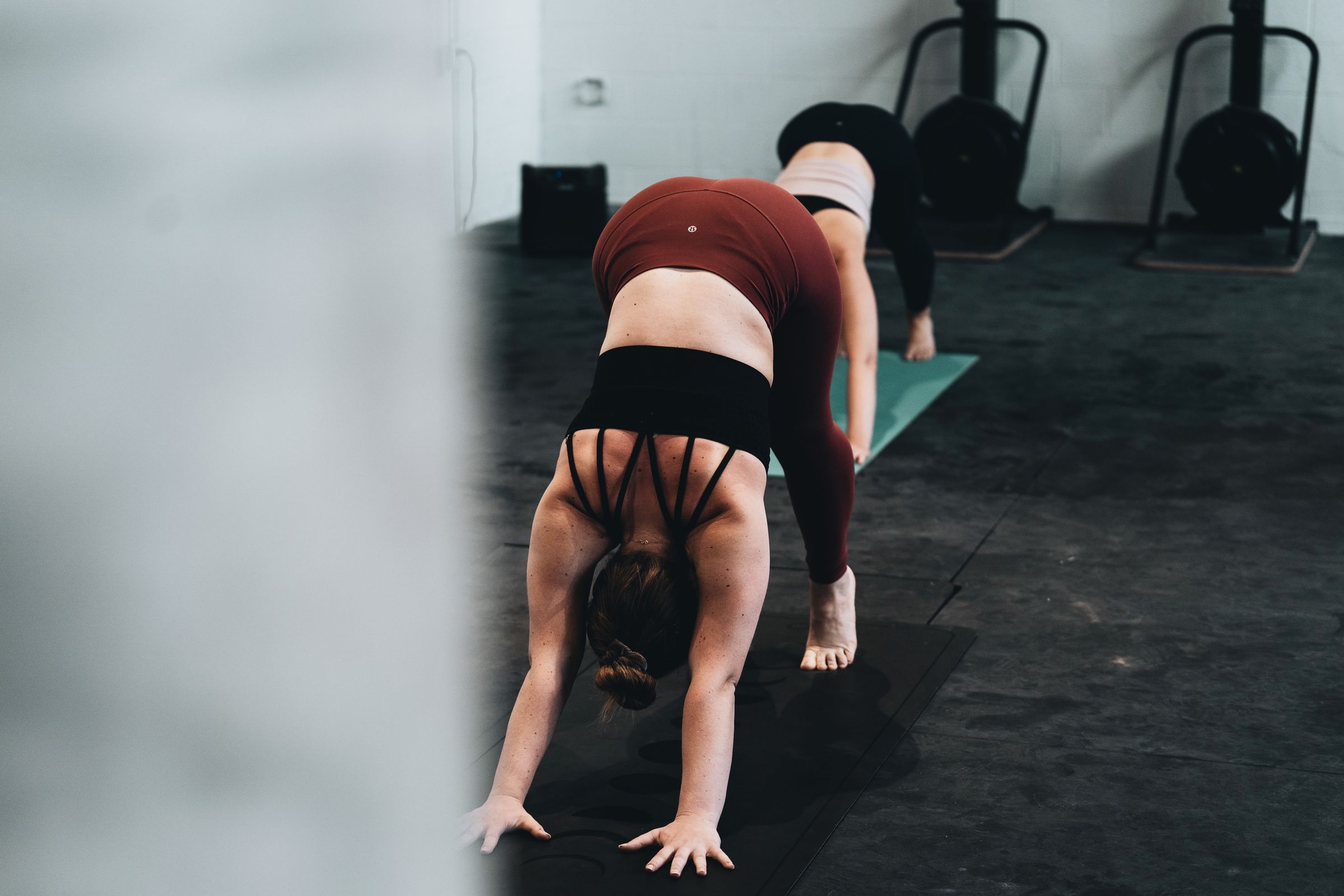How to Sleep with Piriformis Syndrome

Pain of any kind can make sleep difficult, and Piriformis Syndrome sufferers will agree. However, some ways exist to relieve Piriformis Syndrome pain and regain good sleep quality. Today, we’re looking at how to sleep with Piriformis Syndrome and how you can manage your symptoms.
Piriformis Syndrome happens when your piriformis muscle (behind your hip joint) presses on your sciatic nerve and causes inflammation (Cleveland Clinic, n.d.). Sufferers likely feel pain, tingling, and numbness down the backs of their legs and feet.
It’s time to reclaim your rest. Scroll down to learn more about sleep tips for Piriformis Syndrome.
Understanding Piriformis Syndrome
Piriformis Syndrome is one of the least common causes of back pain. Experts estimate only 0.3 to 6% of lower back pain stems from this issue.
The syndrome occurs when your piriformis muscle presses on your sciatic nerve and causes inflammation. Many confuse Piriformis Syndrome with sciatica, but the pain from this syndrome is usually in a specific area rather than a radiating pain. Piriformis Syndrome usually results from injuries, over-exercising, sitting for long periods, or lack of physical activity.
Typical symptoms include the following:
- Pain in the lower back and leg
- Inflammation of the piriformis and surrounding tissues
- Muscle spasms
- Difficulty walking
Sleep posture is a crucial issue to monitor when experiencing Piriformis Syndrome. Some sleeping positions result in more pain than others due to pressure on the affected site. Keep reading to find some Piriformis Syndrome relief during sleep.
Shop Groove PillowsHow To Sleep With Piriformis Syndrome
You should avoid irritating the piriformis muscle while sleeping, and this can be done via proper sleep posture and correct pillows and mattresses.
Let’s review some common sleeping positions for Piriformis Syndrome:
Back Sleeping
Back sleeping is a common position and one of the best for Piriformis Syndrome. This is because it maintains your overall spinal alignment and evenly distributes pressure. In this position, it’s best to sleep with your arms parallel to your side and to keep your hips straight.
Pros:
- Lessens Piriformis leg pain
- Keeps spine aligned
- Relieves lower back pain
- Improves posture
Cons:
- Can feel awkward if you’re not used to back-sleeping
Side Sleeping
Side sleeping is one of the most popular sleeping positions, and when you use proper sleep posture, it’s also great for pain relief and better sleep quality.
Pros:
- Can reduce Piriformis pain
- Offers a comfortable sleep
- Keeps your back straight
Cons:
- It’s easier to revert back to an unhealthy position
- If not done right, it can cause more pain
Sleeping With Knee Support
If you want extra support, add an extra pillow between your knees and side sleeping to align your pelvis. This reduces pain and ensures you stay comfortable throughout the night. You can even invest in a specialised lower back pain relief pillow to optimise your rest.
Pros:
- Reduces Piriformis pain
- Reduces back pain
- More support than side sleeping without a pillow
Cons:
- The pillow may move if it isn’t a specialised one
Extra Sleeping Tips
When it comes to the best sleeping position for glute pain, there’s no one-size-fits-all-all. However, you can use these tips to improve your sleeping position and relieve the aches.
- Try out all recommended Piriformis Syndrome positions to find the best for you
- If the position feels uncomfortable or painful, switch to a different position
- Invest in memory foam pillows and optimised bedding
- Stretch before going to bed
- Practice good sleep hygiene to help you fall asleep

How To Choose the Right Bedding for Piriformis Syndrome
Studies have proven that a specialised back care pillow and other pain management techniques significantly reduce pain and improve sleep (Prommanon et al., 2015). So, choosing the right bedding can be a dealbreaker for Piriformis pain.
Here are some of the top bedding supplies to consider:
Mattress Toppers
If you want to improve the comfort of your mattress without buying a new one, a mattress topper is the perfect solution for you. High-quality toppers with special materials (e.g. latex or memory foam) offer pressure point relief and overall better back support.
Memory Foam Pillows
A specialised memory foam pillow helps to keep your posture aligned as you sleep while keeping pressure off your neck and back. Piriformis pain often manifests in leg pain, but don’t disregard a memory foam pillow because it targets back and neck pain. These pillows ensure your whole body is aligned and pain-free.
The Groove Pillow is a memory foam pillow designed to relieve pain and improve sleep by promoting a neutral spinal alignment. Perfect for anyone ready to relieve Piriformis pain through a healthy sleep position.
Groove Original Neck Pain PillowLower Back Pain Relief Pillows
If you’re a side sleeper, adding a lower back pain relief pillow between your knees takes the pressure off your hips and thighs for a more comfortable and pain-free night of sleep.
The Groove body pillow is a specialised full-length body memory foam, pillow that provides fast-acting relief for various problems, including back pain, knee pain, hip pain, and Piriformis Syndrome pain.
Groove Body PillowHow To Treat Piriformis Syndrome
Knowing how to treat piriformis syndrome is essential, as managing it throughout the day will make it easier to sleep at night. Here are some of the top ways to manage pain and improve Piriformis Syndrome symptoms:
- Ice or heat packs on the inflamed areas
- Over the counter pain medication (e.g. paracetamols or ibuprofen)
- Gentle stretching, such as leg bend stretches to strengthen the piriformis muscle
- Professional massages
- Taking rest when needed
- Physical therapy
Combining these at-home treatments with the best pillow for Piriformis Syndrome will help you achieve comfort throughout the day and while sleeping.

When To Seek Professional Help
If your Piriformis Syndrome pain worsens suddenly or doesn’t get better after a few weeks, it’s time to seek professional medical help.
Pain, tingling, and numbness sometimes disappear after improving your sleep posture or implementing management strategies into your routine. Don’t wait if the pain affects your everyday life. Book an appointment with your doctor.
If you experience extreme pain or numbness that stops you in your tracks or is accompanied by a high temperature and dizziness, you should contact your local urgent care unit.
Final Words
Piriformis Syndrome is uncomfortable, but with the correct management, sleeping position, and sleep aids, you can increase your comfort and achieve a better night of rest. Always remember, if your pain doesn’t go away or worsens, you should visit a doctor for a professional assessment.
Start sleeping without pain today. Explore the Groove Pillow bestsellers here such as the Groove body pillow and original Groove memory foam pillow.
REFERENCES
- Cleveland Clinic. (n.d.). Piriformis Syndrome: Symptoms, Causes and Treatment. [online] Available at: https://my.clevelandclinic.org/health/diseases/23495-piriformis-syndrome.
- Prommanon, B., Puntumetakul, R., Puengsuwan, P., Chatchawan, U., Kamolrat, T., Rittitod, T. and Yamauchi, J. (2015). Effectiveness of a back care pillow as an adjuvant physical therapy for chronic non-specific low back pain treatment: a randomized controlled trial. Journal of Physical Therapy Science, 27(7), pp.2035–2038. doi:https://doi.org/10.1589/jpts.27.2035.

